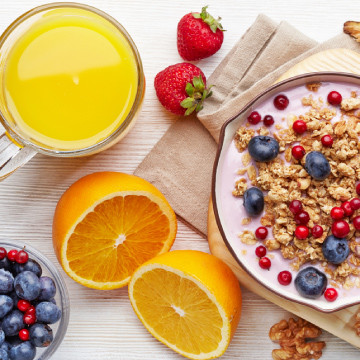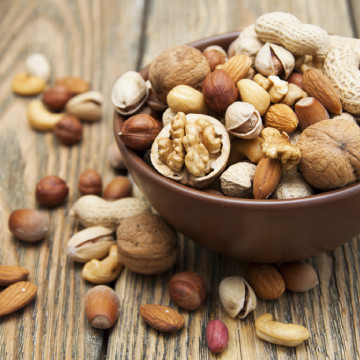Strategies to Lower Your Cholesterol
by Dr. Marc Gillinov
Dr. Marc Gillinov is the Surgical Director of the Center for Atrial Fibrillation at Cleveland Clinic. He is honored to work with the nation’s number one heart team to improve the heart health of people from around the country and around the world.
You know your social security number, your telephone number and a dozen or more computer passwords. But do you know two numbers that could save your life? Do you know your LDL cholesterol and your blood pressure?
If you remember only one key fact about your cholesterol, it should be this: you have the ability to influence your cholesterol by what you eat.
Except for rare instances, your genes and family history do not determine your cholesterol. To a large extent, your cholesterol level is controlled through actions you take, like diet and exercise.
While most people focus on total cholesterol, you should instead think about LDL cholesterol and HDL cholesterol. Of these, LDL is most important. Your LDL cholesterol level has a major influence on your risk of suffering a heart attack or stroke. And here’s the most important message, again: What you eat can influence your LDL cholesterol, meaning that a few simple dietary rules and an active lifestyle can improve your heart-health.
Strategies to Lower LDL Cholesterol:

Fiber
Soluble fiber can help to bind and excrete cholesterol from the body. Soluble fiber is found in oatmeal, bran, vegetables, fruits and legumes, soluble fiber is an important dietary component for those trying to manage their cholesterol levels. As an additional benefit, fiber makes you feel full for longer, meaning that you are less likely to overeat. |

Plant sterols and stanols
Plant sterols and stanols are substances naturally found in plants. When used as food additives, they reduce your body’s absorption of cholesterol. Used to fortify a wide variety of foods ranging from orange juice to yogurt, these compounds help to control LDL cholesterol. Scientific evidence demonstrates that diets that include plant sterol/stanol esters may reduce the risk of CHD, when consumed as part of a diet low in saturated fat and cholesterol. |

Nuts
Snacking on nuts is a great strategy for overall health and cholesterol maintenance. High in monounsaturated and polyunsaturated fats (the good fats), nuts also contain dietary fiber and plant sterols; walnuts and almonds are your best bet. Avoid nuts that are salted or glazed. A handful of nuts (about 1 ounce) makes a healthy snack. |
 The Right Fats The Right Fats
When it comes to lowering your LDL cholesterol, the single most important dietary step is this: reduce your intake of saturated fat and trans fats. Replace these “bad” fats with monounsaturated and polyunsaturated fats to help maintain lower LDL levels when combined with an active lifestyle. |
The key principle remains the same: reduce saturated fat in your diet. Choose white meat without the skin when having chicken or turkey. Favor non-fat or low-fat dairy foods. Finally, read food labels and ingredient lists for baked goods to prevent trans fats from sneaking into your diet; if you see the words “partially hydrogenated oil,” that food contains trans fats and should be avoided.
